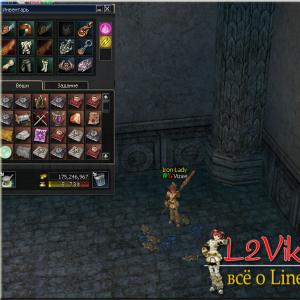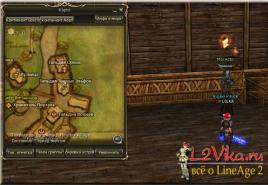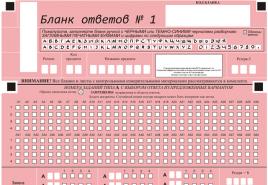Atypical alcohol intoxication is manifested by the following signs. Complicated alcohol intoxication
These are states of mild or moderate acute alcohol intoxication, in which (compared to simple intoxication) an excessively sharp increase or, conversely, weakening of some disorders occurs, or the sequence of their occurrence is disturbed, or symptoms develop that are not characteristic of simple alcohol intoxication.
Mental disorders undergo the greatest modification; much less - neurological. Altered forms of simple alcohol intoxication usually occur under various concomitant conditions: on pathological grounds (psychopathy, oligophrenia, mental illnesses of various genesis, with residual organic brain damage, early onset of alcoholism, formed alcoholism, simultaneous use of alcohol and drugs, combined intake of various types of alcoholic beverages, in cases where intoxication is preceded by a somatic disease or it occurs against its background, as well as in case of lack of sleep, overwork or psychogenic disorders.The selected options reflect the prevailing psychopathological disorders.
Explosive variant of altered simple alcohol intoxication. The state of euphoria is expressed weakly and easily spontaneously or under the influence of external insignificant circumstances by transient outbursts of sharp discontent, irritation or anger. Accordingly, the content of statements and behavior change. Usually these outbreaks are short-lived, alternating with relative calm and even complacency, but during intoxication they are repeated repeatedly.
Dysphoric variant of altered simple alcohol intoxication. A persistent state of tension prevails, accompanied by discontent, gloom, hostility or anger. In almost all cases, a low-dreary affect can be detected. Hostility and anger extend to everything seen and heard: the intoxicated becomes picky, caustic, cocky, looking for a reason to quarrel. A feeling of somatic discomfort and hyperesthesia are often detected. The above violations can be observed for several days after the alcoholic excess.
A hysterical version of a modified simple alcohol intoxication. The behavior of the intoxicated is always designed for the viewer. Often in statements that are distinguished by pathos, various accusations against others, self-praise or, on the contrary, exaggerated self-reproach, predominate, fantasizing is often observed.
Depressive variant of altered simple alcohol intoxication. The clinical picture is dominated by a depressed mood of varying severity and shades. As a rule, the euphoria of the initial period is either absent or short-lived. In relatively mild cases, there is a subdepressive affect with tearfulness, unpleasant memories, self-pity. In more severe cases, there is longing, a feeling of hopelessness, anxiety, which are accompanied by self-reproaches and suicidal thoughts. Due to the lack of motor inhibition in this state, the likelihood of suicidal attempts is high.
Altered simple drunkenness with impulsive actions, as a rule, is observed in patients with schizophrenia and is usually accompanied by sexual perversions - homosexual acts, exhibitionism, flagellation. Pyromania and kleptomania are much less common.
Altered simple alcoholic intoxication with a predominance of somnolence. After a short and mild period of euphoria, a state of drowsiness occurs, quickly turning into sleep.
Manic variant of altered simple alcohol intoxication manifested by high mood with carelessness and complacency, short outbursts of irritation, various "naughty" actions, annoying pestering, inappropriate jokes, loud laughter, increased responsiveness to the environment. The picture of intoxication may resemble a manic state of organic genesis, less often - hebephrenic excitement.
With all the listed forms of altered simple alcoholic intoxication, symptoms of ordinary intoxication, expressed to varying degrees, are always observed: deterioration in motor skills, articulation, changes in behavior depending on environmental conditions, and intact orientation.
The most severe in terms of clinical manifestations and social consequences are such altered forms of simple alcohol intoxication as epileptoid and paranoid. Their very name emphasizes the well-known similarity with the main types of pathological intoxication.
Studies have shown that with these forms of intoxication in premorbid, almost half had alcoholism, and every seventh had psychopathy. On neurological examination, half had diffuse neurological symptoms. In 80% of cases, intoxication is preceded by psychogenic disorders, malnutrition, lack of sleep. At the initial stage of intoxication, there are violations characteristic of simple alcohol intoxication. Subsequently, most often under the influence of an external, usually insignificant, but negative factor, the picture of intoxication changes. Typically, such a transformation is observed 1.5 hours after the last alcohol intake. The dose of alcohol is usually 300-700 ml (in terms of vodka). The resulting mental disorders have quite specific features, which makes it possible to distinguish two forms.
Epileptoid variant of altered simple alcohol intoxication. The transformation of the clinical picture is determined by rapidly increasing motor excitation with the effects of irritation or anger towards others. The state deepens under the influence of opposition and is complicated by aggressive violent acts. Initially, aggression is usually selective and directed at persons directly related to the behavior of the intoxicated. As motor excitation intensifies, aggressive actions spread to everyone who is nearby. The disturbances of coordination of the movement observed earlier usually decrease or absolutely disappear. At the height of arousal, movement disorders and statements may become stereotyped, but a semantic connection with the situation of the initial period of intoxication is always preserved. Moreover, the intensity of speech-motor excitation and the aggressive actions associated with it is subject to certain fluctuations, depending on the verbal reactions of others. At the height of the episode, there is no complete separation of the intoxicated from the real situation. Mental disorders disappear critically, followed by drowsiness or sleep. Quite often there is amnesia of the period of pronounced excitement.
A paranoid variant of altered simple alcohol intoxication. The transformation of the clinical picture is also determined by an increase in motor and speech excitation. Against this background, intoxicated people shout out individual words or short phrases, the content of which expresses a situation of tension or danger: “bandits”, “shoot”, “kill”, “run”, “hide”, etc. At the same time, statements appear that reflect the real situation, professional activities, unpleasant events that precede intoxication. Aggressive actions are usually differentiated, performed taking into account the situation, changing depending on the words and actions of others. Characterized by a decrease and even the disappearance of impaired coordination of movements and dysarthria. The statements of the intoxicated are usually somehow connected with specific events taking place around, they do not reflect the internal state and therefore it is more correct to designate them as delusional. Mental symptoms of intoxication usually disappear lytically, in 2/3 of cases there is amnesia of intoxication.
Simple alcohol intoxication (including all its modified forms) in various manifestations, especially considered in dynamics, retains to one degree or another the main signs of acute alcohol intoxication. In these cases, there is no twilight stupefaction of consciousness. This is evidenced by the safety of the intoxicated contact with the environment. A variety of actions, including inadequate, insufficiently motivated, are usually due to some external and specific reason throughout the duration of intoxication. The actions of the intoxicated, as well as their verbal reactions, are selective, they retain the ability to capture the situation and the changes taking place in it. The appearance or presence of persons capable of counteracting an intoxicated person with unpleasant consequences for him, one way or another affects his actions: he tries to hide, leave, or, conversely, gets even more excited, resists, and sometimes resorts to aggression.
(Hoffman A.G. 1991).
1. Intoxication with foolishness. It is characterized by high spirits with carelessness, complacency, antics, disinhibition of drives, infantile forms of behavior. 2. Intoxication with hysterical features. It is characterized by demonstrativeness, theatricality, the desire to attract attention, demonstrative suicidal attempts, violent scenes of despair. This type of intoxication does not occur when drinking alcohol alone. 3. Intoxication with depressive manifestations. It is characterized by a depressed mood with melancholy, anxiety. Suicidal attempts are possible. Intoxication is accompanied by motor and speech retardation. Usually this form of intoxication is an expression of psychogenic or endogenous depression and exposes existing affective disorders. 4. Intoxication with explosiveness or dysphoric variant of intoxication. It is characterized by a predominance of a gloomy mood with irritability, a tendency to verbal and physical aggression. This form of intoxication is typical for patients with organic brain damage (vascular, post-traumatic) and for persons with psychopathic character traits. 5. Epileptiform intoxication. This form of intoxication is characteristic of persons with epileptoid character traits. It is characterized by constantly manifesting discontent, captiousness, gloomy affect, readiness to commit aggressive acts. Unlike pathological intoxication, this form of intoxication is not accompanied by amnesia. 6. Pseudoparanoid intoxication. It is characterized by the appearance of suspicion, resentment, captiousness, a tendency to interpret the words and actions of others as a desire to humiliate, deceive; possible ideas of jealousy, condemnation. It is observed in individuals with paranoid character traits. 7. Hallucinatory-delusional intoxication. This form of intoxication occurs in patients with alcoholism with a long history of the disease, the presence of alcoholic encephalopathy and pronounced personality changes. Intoxication is accompanied by the appearance of perceptual delusions, sensory delusions and delusional behavior. After sobering up, the delusions of perception disappear. Fragmentary memories remain of the state of intoxication. Intoxication ends most often with the onset of sleep. This form of intoxication differs from pathological intoxication by the presence of neurological disorders - ataxia, dysarthria, the ability to maintain speech contact, to navigate in a stop. Hallucinatory-delusional intoxication can occur repeatedly throughout life. pathological intoxication.
PATHOLOGICAL DRUNKING.
Acute transient psychosis, proceeding in the form of twilight clouding of consciousness. Persons who have committed a crime in a state of pathological intoxication are recognized as insane and do not bear criminal liability.
In the international classification of diseases ICD-10, which all doctors now use, ordinary alcohol intoxication is even assigned its own code F 10.1 and it is listed under mental and behavioral disorders.
But it turns out that alcohol intoxication itself can proceed normally or pathologically.
"Normal Alcohol intoxication is a natural reaction of a healthy body to the ingestion of alcohol.
"Pathological"Alcohol intoxication is an abnormal reaction to alcohol, usually due to the presence of mental disorders, overwork or diseases of the internal organs.
The mental state during normal alcoholic intoxication changes and proceeds in the form of two phases (stages):
Euphoria. Manifested by an elevated mood, a feeling of comfort, pleasant dizziness, a desire to communicate (or sing, dance, etc.). Usually lasts no more than 2-3 hours.
Falling asleep. After the passage of the excitation phase, inhibition occurs, which is manifested by deep sleep.
Stages of intoxication
According to the severity of intoxication, doctors distinguish several stages. Below in the table we will give the levels of alcohol in the blood corresponding to each stage and the main symptoms (signs).

Normally flowing intoxication is characteristic of physically healthy people without mental disorders.
Pathological alcohol intoxication is an atypical, painful reaction of the body to alcohol intake. It should not be confused with alcoholism. It is often observed in alcohol dependence, but can also occur in non-alcoholics.
Causes of the pathological form of alcohol intoxication
- mental disorders (depression, neuroses, personality disorders, organic lesions of the nervous system, schizophrenia, etc.);
- neurological diseases (strokes, neoplasms of the brain, multiple sclerosis, Parkinson's disease, encephalopathy, etc.);
- internal diseases (diabetes mellitus, hypertension, hypotension, rickets, etc.);
- infections;
- overwork and many other factors.
Pathological intoxication can develop after the "normal", in some cases - immediately after the ingestion of alcohol. Usually lasts from half an hour to 2 hours, but sometimes longer.
Forensic psychiatric experts equate to a mental disorder with a decrease in a person's ability to be aware and manage their actions.
Forms of pathological intoxication
Pathological intoxication can occur in the form of several forms (we give the most common): - Dysphoric alcohol intoxication. There is aggressiveness, a melancholy-evil mood, a desire to punish, a heightened sense of justice, and general excitement. As a rule, in this state, the intoxicated person does not sit still, but strives to go out somewhere, to find fault with something, to get involved in "some kind of adventure." It can end with illegal actions with getting into the police or a psychiatric (or drug treatment) clinic. Partially or for the entire period of such intoxication, the memory may “turn off”, when in the morning nothing can be remembered. If there is a danger to others or to oneself, involuntary hospitalization may be used.
- Depressive alcohol intoxication. Instead of an increase in mood, it decreases. Weeping begins, ideas of one's own guilt and sinfulness are expressed, sometimes even suicidal conclusions. Tears are accompanied by screaming, throwing, "hand-wringing", it can go as far as self-harm.
- Amnestic form of alcohol intoxication. Manifested by turning off memory for part or the entire period of intoxication.
- Intoxication in the form of "anesthesia". It is common to fall asleep quickly with a transition to depression of the nervous system with the development of a soporous state and even coma with the loss of all types of sensitivity. The most life-threatening form of intoxication.
- Delusional (paranoid) form of alcohol intoxication. It is manifested by the appearance of false beliefs that cannot be dissuaded (delusions) and determine behavior: with ideas of influence or surveillance, they can, for example, disassemble appliances and furniture in search of "bugs" and "eavesdropping devices", throw away things that seem to be poisoned, etc.
Pathological variants of alcohol intoxication are always potentially dangerous for the patient and his surroundings, so you should not leave such people alone and arrange for them to be examined by a specialist psychiatrist or psychiatrist-narcologist.
A severe form of ordinary intoxication is also a condition requiring urgent medical attention, which boils down to detoxification (reducing the concentration of alcohol in the blood).
How to behave and where to turn in such cases, see.
Complicatedintoxication- this is a painful condition that occurs after taking relatively small doses of alcohol, manifested by pronounced intoxication with psychomotor agitation, irritability, anger, hatred, and some stupor. Such intoxication proceeds in waves and sometimes with a predominance of short-term mental disorders.
The atypical dynamics and clinical manifestations of acute alcohol intoxication in such cases are due to additional factors: the presence of mental illness (alcoholism, psychopathy, oligophrenia, residual effects of organic CNS damage, schizophrenia, epilepsy); factors that asthenize the body (lack of sleep, colds, infectious diseases, gross deviations in diet), increased toxic effect of alcohol with combined use (accidental, situational or intentional) of alcoholic beverages and medications (sedatives, analgesics, hypnotics, etc.). Instead of alcoholic euphoria, such persons may experience a depressive state with anxiety, suicidal attempts, etc.
Depending on the dominant psychopathological symptom, atypical variants of alcohol intoxication are distinguished: with explosiveness, hysterical traits, depressive effect, paranoid mood, pronounced motor speech excitement and increased affect, etc. With altered variants of alcohol intoxication, as a rule, there is no gross violation of all types of orientation. Subjective sensations and behavioral reactions are not significantly divorced from real events. Unlike simple intoxication, these variants of the period of intoxication are often partially or completely amnestic. Persons who have committed a crime in a state of complicated alcohol intoxication are recognized as sane.
Pathologicalintoxication- this is a short-term acute psychosis that occurs suddenly, after drinking, as a rule, small doses of alcohol, in the clinical picture of which twilight clouding of consciousness is predominant with severe affective disorders (fear, horror, anxiety, anger, rage), delirium, hallucinations of frightening content, complete preservation of coordination of movements, motor excitation (often destructive socially dangerous illegal tendencies and actions), subsequent: deep sleep, amnesia (full or partial) of the period of a psychotic episode, mental and physical exhaustion.
Pathological intoxication is pathogenetically associated with epilepsy, the consequences of traumatic brain injuries, infections, intoxications, chronic alcoholism, vascular lesions of the brain, psychopathy and severe neurosis. The etiological factor is alcohol taken in one dose or another. Additional factors in the etiology of pathological intoxication are psychogenic (strong excitement, fear, fear, anger, anger, quarrel, jealousy), overwork, insomnia, staying in poorly ventilated rooms, pregnancy, menopause, condition after infections, intoxication.
With a certain degree of conventionality, two main clinical forms of pathological intoxication are distinguished: epileptoid and hallucinatory-noparanoid. Examination of persons who have committed illegal acts in a state of pathological intoxication is carried out in the conditions of a forensic psychiatric department of a psychiatric hospital or a psycho-neurological dispensary.
Persons who have committed crimes in a state of pathological intoxication are recognized as insane and are not subject to criminal liability.
A psychoactive substance (surfactant) is understood to mean any substance (natural or synthetic) that, when taken once, can change mood, physical state, self-awareness, perception of the environment, behavior, or give other psychophysical effects desirable from the consumer's point of view, and when taken systematically, cause mental and physical dependence.
There are three groups of psychoactive substances: alcohol, drugs and toxic substances. The latter also include drugs with a psychotropic effect (the so-called psychotropic drugs) approved for medical use by the Pharmacological Committee of the Russian Federation and not included in the official “List of narcotic drugs, psychotropic substances and their precursors subject to control in the Russian Federation”.
Alcohol is the most commonly used psychoactive substance. Alcohol-containing drinks from the standpoint of pharmacology, toxicology and narcology are a narcotic substance. But since alcohol is not listed as controlled as a drug, alcoholism is not legally considered a drug addiction. In the system of organizing drug treatment for the population, alcoholism occupies a leading place and represents the main form of diseases in this group.
Under dope
understand a substance that meets the following criteria:
a) has a specific effect on mental processes - stimulating, euphoric, sedative, hallucinogenic, etc. (medical criterion);
b) non-medical consumption of the substance is on a large scale, the consequences of this acquire social significance (social criterion);
c) in accordance with the procedure established by law, it is recognized as a narcotic drug and included in the list of narcotic drugs by the Ministry of Health of the Russian Federation (legal criterion).
Non-listed psychoactive substances are commonly referred to as toxic . They have all the psychotropic properties of drugs, they have common patterns of addiction formation with drugs. Moreover, addiction in substance abuse is often more pronounced. If the Criminal Code of the Russian Federation does not provide for criminal liability for the illegal acquisition, storage, manufacture, processing, shipment and sale of these substances, then they are not considered drugs.
Due to the fact that currently in our country there is an increase in the use and abuse of psychoactive substances, a doctor of any specialty should know the features of taking an anamnesis, physical examination and the possibility of express diagnosis of patients with suspected substance abuse.
Collection of anamnesis: Usually, these patients tend to deny the fact of use or underestimate the dose due to fear of the consequences that admission to the use of psychoactive substances may entail. Therefore, if you suspect the use of PAS, you should strive to obtain objective information from other sources. At the same time, the doctor must understand that the patient will seek to downplay or completely deny the fact of the use of PAS.
It should be borne in mind that substance abuse often coexists with mental disorders (depression, anxiety), which in itself is also the cause of their occurrence. Patients can self-medicate using both prescription and non-medical medications. When examining a patient with symptoms of depression, anxiety or psychosis, it is necessary to exclude the possibility that these disorders could be caused by the use of psychoactive substances.
On physical examination it should be determined whether the patient's somatic disease is associated with the use of PAS. Thus, if symptoms of HIV infection, abscesses, bacterial endocarditis, hepatitis, thrombophlebitis, tetanus, abscesses, scars from intravenous or subcutaneous injections are suspected or detected, it is necessary to exclude intravenous or subcutaneous administration of surfactants. In patients who inhale cocaine or heroin, displacement or perforation of the nasal septum, nasal bleeding, and rhinitis are often observed. Patients who smoke refined cocaine, crack, marijuana, or other drugs (including inhalants) often suffer from bronchitis, asthma, and chronic respiratory diseases.
If substance use is suspected, it is highly likely to use rapid tests for the detection of narcotic substances in urine. Domestic tests have proven themselves well, which make it possible to establish with very high certainty whether the patient uses certain drugs. The availability of tests for the determination of one or several surfactants at once opens up wide opportunities for early diagnosis. The simplicity of diagnostic testing, the ability to determine narcotic substances of the opium group within five days, and cannabinoids - within 2 weeks after the last use, makes it possible to use them in medical institutions, everyday life, educational institutions, during examination, etc.
Medical records should include a detailed description of the substance used, not the category to which it belongs. Also indicate the method, dose and frequency of administration, if express testing was carried out - its results. It should be borne in mind that rapid tests, as well as laboratory research methods in diagnosing addiction to PAS, are only of auxiliary importance, since the very fact of PAS detection in the patient's body is not a basis for making a diagnosis. The main method in the diagnosis of the disease remains the method of clinical examination.
Alcoholism and alcoholic (metalcohol) psychoses
Alcoholic hallucinosis
Alcoholic hallucinosis - the second most common psychosis in a patient with alcoholism. The duration of the existence of the second stage of alcoholism by the time of the onset of the first hallucinosis in life in 90% of cases exceeds 5 years, the age of patients ranges from 25 to 40 years. Psychosis occurs in the first days after the cessation of alcohol abuse. The previous binge is usually at least 3-4 days. Most patients have an additional pathology: residual effects of organic brain damage, various somatic diseases.
The prodromal stage of alcoholic hallucinosis is an alcohol withdrawal syndrome that is more severe than is typical for this patient. This is due to the fact that before the onset of the first hallucinosis in life, the duration of binge increases or the daily dosage of alcohol increases. The severity of the withdrawal syndrome is less than with the development of delirium, convulsive seizures occur very rarely
The clinical picture of psychosis is dominated by true verbal hallucinations; the patient's consciousness is not clouded. Hallucinations are true, usually have content that is unpleasant for the patient: threats, insults, abuse. The patient is called "an alcoholic, a drunkard", threatened with reprisals. There is no criticism of hallucinatory experiences, while the patient's consciousness is not grossly disturbed, auto- and allopsychic orientation is preserved. The behavior of patients is usually determined by the content of hallucinations. Especially dangerous for others and the patient himself are imperative hallucinations. Unstable secondary delusions of persecution, relationships may join. The mood background corresponds to the theme of hallucinations, often the patient is alert, anxious, sometimes depressed.
Treatment of patients with alcoholic hallucinosis is carried out in a psychiatric hospital. The main treatment is the elimination of productive psychotic symptoms. For this purpose, psychotropic drugs are prescribed: haloperidol, tizercin, etaperazine. Mandatory components of complex treatment are detoxification, vitamin therapy (especially group B), nootropics. All patients who have had alcoholic hallucinosis are shown proper anti-alcohol treatment.
Alcoholic paranoia (delusions of jealousy)
Alcoholic paranoia (alcoholic delusions of jealousy, alcoholic delusions of adultery) – a chronic form of meth-alcohol psychosis with a predominance of primary paranoid delusions occurs exclusively in men, the average age of onset of the disease is about 50 years.
Alcoholic paranoia occurs predominantly in individuals with psychopathic traits. They are characterized by such characterological properties as incredulity, a tendency to regulation, sthenicity, egocentrism, excessive demands, stagnant affects, a tendency to form overvalued ideas. These character traits are especially noticeable during the period of alcoholic excesses.
Usually delirium is monothematic, develops gradually and inconspicuously. At first, separate delusional statements are observed only during the period of intoxication, and after sobering up, the patients refuse the accusations, explaining the unfounded claims by the fact that they were drunk. Then jealous fears begin to speak out and in a state of a hangover. Gradually, a persistent systematized delirium of jealousy is formed. Patients delusionally interpret the actions of their wife or mistress, meticulously examine the body, carefully check women's underwear, trying to find confirmation of their thoughts. Often delusional and affective illusions can arise: the folds on the pillow are regarded as a mark from the lover's head, the spots on the floor in the bedroom are interpreted as traces of sperm. Usually at this stage in the development of delusions, a conflict arises in family relationships, which leads to the rejection of intimacy. This further strengthens the patient's confidence in his wife's infidelity. The content of delusional experiences, reflecting the characteristics of relationships and conflicts encountered in life, retains a certain plausibility. In this regard, the people around the patient do not consider his condition painful for a long time.
Often, to prove their innocence, patients force their wives to confess to infidelity. If a woman does not withstand requests, threats, beatings and confesses to supposedly committed infidelities, this only strengthens the patient in his rightness.
Further change in psychosis may be associated with the appearance of retrospective delusions. The patient begins to assert that his wife is cheating on him not only now, but did it before, even in the first years of marriage, moreover, she gave birth to children not from him. In support of his words, the patient cites a lot of real facts, interpreted in a delusional way. Behavior towards children becomes consistent with delirium. Sometimes the transformation of a monothematic delusional syndrome is complicated by delusional ideas of poisoning, witchcraft, or damage, usually associated with a pre-existing delusion. Often in these cases, the repressed-malicious affect and continued drinking may result in delusional behavior with acts of violent aggression against wives. A fairly common form of delusional behavior of such patients is the murder of a spouse, usually committed in a state of alcoholic behavior. Aggressive behavior towards an imaginary opponent, even a personified one, is rarely observed.
Patients are usually hospitalized as involuntary hospitalization due to the danger of their behavior to others. Criticism to the ideas of jealousy usually does not appear in the process of antipsychotic therapy, but patients stop delusionally evaluating the actions of others, the behavior becomes harmless for loved ones. Discharge from the hospital is possible only in case of de-actualization of delirium.






